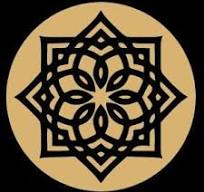Do you have to understand the laws of the Torah to be able to observe them? This is not a new question. It was probably born at the same moment the laws of the Torah were introduced to the Israelites for the first time, but it has gained prominence in Talmudic times, as scholars were crafting a Jewish theology to serve the needs of a population stricken by exiles, economic strife, and religious persecutions. The rabbis felt the urgency of discussing issues such as reward and punishment, the purpose in life, and of course, the meaning and purpose of the Torah’s commandments. That last theme raised concerns among some rabbis that once the purpose of the Mitzvah will be determined, people will argue that they can achieve the goal by other means. In later generations, a synthetic approach emerged, which claimed that one must seek an understanding of the purpose of the Mitzvot, but even when this is achieved, the compliance must stem not form logical conviction but from total obedience to the Divine word.
All approaches agree that there is a reason for each Mitzvah, but they disagree as to what is the reason. According to some, the benefit of obeying a commandment or avoiding transgression is intrinsic and unique to each concept, while others believe that many laws are arbitrary, and that they benefit us by teaching us to be obedient and so be closer to God.
One of the Mitzvoth which exemplifies the concept of blind obedience is the ritual of the red heifer. It is highlighted in several Midrashic sources as a Mitzvah which makes no sense. Particularly perplexing in this ritual is the fact that while the potion of the red heifer changes the status of the impure to pure, it does the opposite for all those who handle the potion. Four people, the one who slaughters the heifer, the one who burns it, the one who collect the ashes, and the one who sprinkles the potion on the impure person, all turn from pure to impure and need to undergo a process of purification.
In his commentary on the Torah (Num. 19:2), Rashi writes:
The devil and the nations tease Israel, saying, what is this Mitzvah and what is the logic behind it? The Torah therefore said: This is the law! Meaning that God has made a law and a decree, and we have no right to second-guess Him.
Based on this commentary and on several Midrashic sources, most people believe that the word Hukkah – חקה means an arbitrary law. Others believe that it denotes a Mitzva which has a mystical reason, which we are not capable of grasping. There are several problems with this approach, and particularly in the way it is applied to the ritual of the red heifer:
- As parents, educators, commanders, and executives know very well, there are much better chances of cooperation and compliance, when the reason for the orders, commandments, and the need for acquiring knowledge is well explained.
- Rashi’s answer to the teasing by the devil and the nations does not address their mockery, but rather emboldens the Jews in their determination to keep the law even though they do not understand it.
- The word Hukkah appears in two other places in the Torah as an introduction for mitzvot which make perfect sense, such as the Pesah sacrifice (Ex. 12:43), and the cleansing of vessels (Num. 31:21).
- Most importantly, there is an explanation for the red heifer ritual. R. Yosef Ber Soloveitchik points out in his Beth HaLevi commentary (Ex. 31) that the Midrash provides a detailed analogy of the red heifer and the golden calf, and I have presented here a theory that the ritual was a therapy to help the mourner deal with grief.
The answer to all these questions is that we are dealing with a Midrash which was taken out if context and drafted to the war against rationalism. The original Midrash referred to a different verse in the same Parasha (Num. 19:14): אדם כי ימות באהל – when a person dies in a tent. The argument of the Midrash, later applied by Rashi to the ritual itself, was originally directed at the concept of death. Humans challenged God with the question: “why have you created death, or a world where death is a possibility?” and God answered: “this is my decree, do not second guess me!”
The Midrash was preserved in one source (Yalkut Shimoni on Deut. 32:49) as God’s response to Moshe when he argues that he should merit a longer life, or not die at all:
אמר לו הקדוש ברוך הוא: משה! גזירה היא מלפני שוה בכל אדם, שנאמר, זאת התורה אדם כי ימות
God told him: Moshe! It is my decree for all humans! It is written: when a man dies in a tent!
Conclusion: the ritual of the red heifer is frequently used to fend off the demand for a better understanding of the logic and meaning behind each commandment and concept of Jewish law, but as we have seen here, there is little basis for it in the Torah, and the Midrashic literature was based on a misunderstood source. It is imperative that we strive to understand and internalize the intrinsic value and benefit of the rich trove of Jewish law and lore, or we run the risk of either becoming observant robots, or slowly losing our connection to Judaism and its spirituality.









Ohr HaChaim Yomi – Shemini